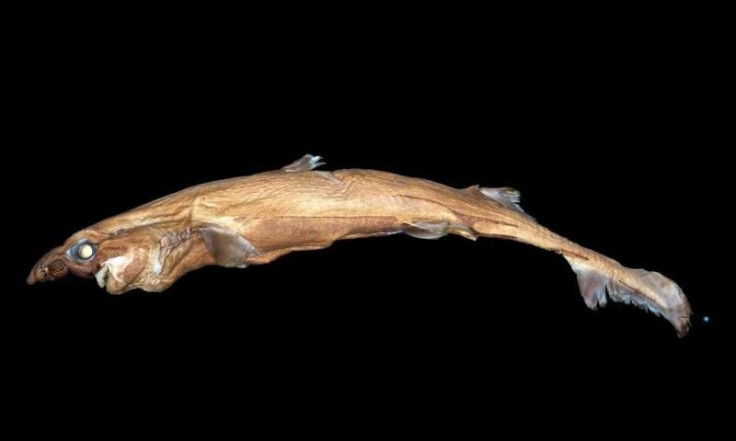Bizarre new glow-in-the-dark shark with huge nose discovered deep below the sea
The species is a member of the Lanternshark family.

In the depths of the Pacific, off the coasts of the north-western Hawaiian Islands, scientists have discovered a bizarre new miniature shark species. Measuring less than a foot (30 centimetres), it is a 'glow-in-the-dark' shark.
Although the shark, known as Etmopterus lailae, was discovered 17 years ago about 1,000 feet under water (304 m), it's only recently that scientists have been able to identify it as a new species.
Indeed at first, they did not realise that this was an unknown species - not until a scientist who reviewed their find said that the shark was not what they originally thought it was. From this moment, they began to investigate whether it could be a new species.
"There are only about 450 known species of sharks worldwide and you don't come across a new species all that often," co-author Stephen Kajiura from Florida Atlantic University, said in a statement.
"A large part of biodiversity is still unknown, so for us to stumble upon a tiny, new species of shark in a gigantic ocean is really thrilling. This species is very understudied because of its size and the fact that it lives in very deep water. They are not easily visible or accessible like so many other sharks."
They have now described the creature in the journal Zootaxa.
Big nose and bioluminescence
The shark was measured and compared with other existing museum specimens. The scientists found that it was less than a foot long and that it weighed under 2 pounds full-grown, which makes it a very small species.
It also displays unique flank markings that go forward and backward on their bellies, a naked patch without scales on the underside of its particularly large snout. It also has fewer teeth than other sharks.
The scientists were able to place it in the Lanternshark family, and like other members of this group it is bioluminescent - the flanks on the bottom of its belly can glow in the dark.
It's not clear what the purpose of these bioluminescent features are, but scientists think it might be a way for the sharks to ensure they are mating with the right species or that it might be a camouflage to hide from predators in the deep dark depths of the sea.
Bioluminescence could also help the animals attract their prey, including small fish or shrimp.
The scientists believe that exploring the depths of the ocean could reveal a lot more mysterious, unknown species like Etmopterus lailae.
"The research team's discovery of a new shark species is evidence of how much is still undiscovered in our world," said Ata Sarajedini, dean of Florida Atlantic University's College of Science. "This new species is the tip of the iceberg for what else might be out there and the great potential for all of the yet-to-be undescribed species that still need to be explored."
© Copyright IBTimes 2024. All rights reserved.






